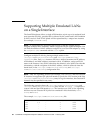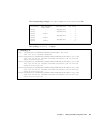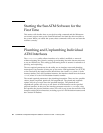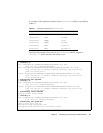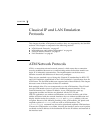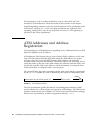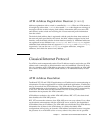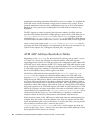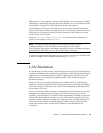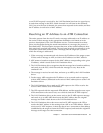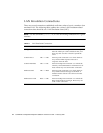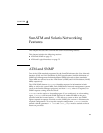
66 SunATM 3U CompactPCI Adapter Installation and User’s Guide • February 2001
The transparency to IP is enabled in different ways in Classical IP and LAN
Emulation. Those differences will be discussed in later sections of this chapter.
SunATM signalling conforms to the user network interface (UNI) specification of the
ATM Forum. Versions 3.0, 3.1, and 4.0 of that specification are supported. This
signalling, called Q.2931, runs on top of QSAAL and uses VC 5 for signalling as
specified in the Forum specification.
ATM Addresses and Address
Registration
UNI signalling uses ATM addresses for signalling. Every ATM interface has an ATM
address in addition to its IP address.
ATM addresses, like Network Service Access Point (NSAP) addresses, are 20 octets
long. The End System Identifier (ESI) field within the ATM address is a unique
six-octet value; this can be the IEEE hardware MAC address conventionally
associated with every network interface. The Selector field is one octet long. The 13
octets that make up the rest of the ATM address are called the Network Prefix, and
are derived from the ATM switch fabric to which the interface is connected. Every
ATM switch fabric is configured with a 13-octet prefix.
On a SunATM host, the prefix associated with the local switch fabric is represented
by the $prefix variable. Its value is obtained by the system at configuration time.
FIGURE 7-1 ATM Address Fields
The UNI specification specifies the Interim Local Management Interface (ILMI)
service interface for a client to learn and register its ATM address. The ILMI service
interface is based on the use of SNMP over AAL5. In the SunATM software package,
ILMI service is provided by an address registration daemon, ilmid.
Determined by the ATM switch/13 ESI/6 octets SEL
1 octet



